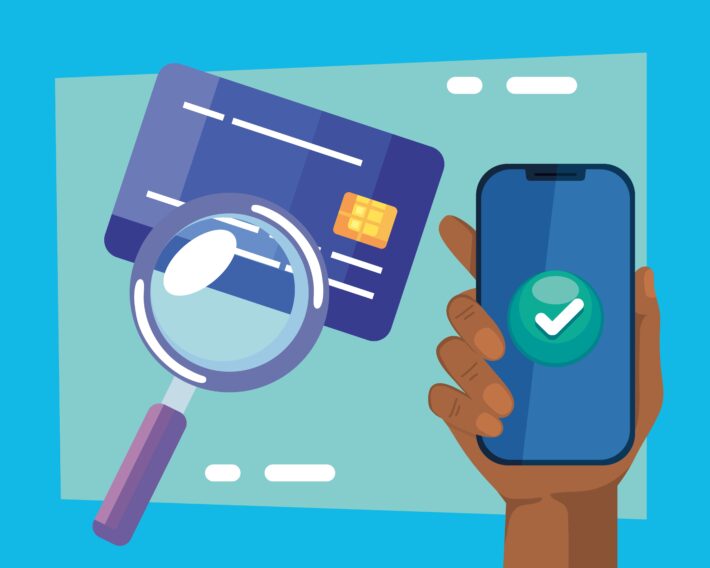Identity Verification Strategies For Ensuring Data Accuracy

In the contemporary digital landscape, identity verification has emerged as an essential process that protects both individuals and businesses. As online interactions increase, the need to ensure the authenticity of identities has never been more critical. This article examines the concept of identity verification, ID verification for data accuracy its significance, and effective strategies for maintaining data accuracy.
We will discuss prevalent challenges, including fraudulent activities and privacy concerns, while emphasizing how businesses can utilize identity verification to mitigate losses and foster customer trust.
We invite you to explore the various methods and advantages of this vital practice.
What Is Identity Verification?
Identity verification is an essential process utilized to establish and confirm an individual’s digital identity through a range of methods, including authentication methodologies, biometric verification, and document validation.
As online transactions continue to proliferate, organizations are increasingly dependent on identity verification to mitigate the risk of identity theft, strengthen security measures, and ensure compliance with privacy regulations. This process not only enables secure transactions but also enhances user trust by promoting accurate data management and integrity.
Consequently, it allows businesses to adhere to data privacy laws and implement comprehensive identity management frameworks.
Why Is Identity Verification Important?
Identity verification is essential for businesses today, as it plays a critical role in fraud prevention and customer identification. This process ensures that only legitimate users have access to sensitive information and services.
Effective identity verification not only protects against identity theft but also fosters user trust and confidence in digital platforms. Furthermore, adherence to various standards and regulations requires the implementation of robust verification methods to safeguard data integrity and maintain quality.
By employing effective risk assessment strategies, organizations can mitigate potential threats and strengthen their security posture, thereby prioritizing the protection of user data.
What Are The Strategies For Ensuring Data Accuracy In Identity Verification?
Ensuring data accuracy in identity verification is critical to maintaining the integrity of verification processes. This involves the implementation of various strategies, including advanced analytics and data validation techniques.
By utilizing machine learning algorithms and sophisticated verification technologies, organizations can enhance their identity validation systems and optimize data processing capabilities. Adopting a risk-based approach enables businesses to identify potential discrepancies and implement stringent checks, thereby improving data quality, safeguarding against fraud, and ensuring compliance with privacy regulations.
1. Multi-Factor Authentication
Multi-factor authentication (MFA) is a highly effective user verification method that enhances security by requiring multiple forms of verification prior to granting access. This significantly reduces the likelihood of unauthorized access to sensitive information. MFA typically combines something the user knows, such as a password, with something the user possesses, like a mobile device that generates a one-time code. This approach ensures secure transactions and effective identity verification.
There are various forms of MFA, including biometric factors such as fingerprints or facial recognition, which provide an additional layer of verification beyond traditional methods. By implementing these techniques, organizations can not only strengthen identity verification measures but also foster greater trust in their security protocols.
These advanced technologies contribute to an environment in which users feel more secure when sharing personal and financial information, thereby minimizing risks associated with identity theft and data breaches. As cyber threats continue to evolve, it is imperative for any organization seeking to protect sensitive assets to understand and implement a range of MFA strategies effectively.
2. Biometric Verification
Biometric verification represents an advanced method of identity authentication that utilizes unique physiological characteristics, such as fingerprints, facial recognition, or iris scans, to securely verify users’ identities. By incorporating biometric data, organizations can establish stringent security protocols that enhance user authentication and mitigate the risk of identity theft.
This innovative technology offers significant advantages over traditional verification methods, such as passwords or PINs, which are often susceptible to breaches and can be easily forgotten or compromised. In contrast to conventional approaches, biometric verification relies on traits that are inherently unique to each individual, rendering it exceedingly difficult for unauthorized users to gain access.
The convenience of utilizing one’s own physical attributes streamlines the verification process, facilitating quicker access while upholding a high standard of security. As organizations increasingly implement biometric solutions, they not only strengthen their security measures but also cultivate greater trust with users, ensuring that sensitive information is protected more effectively than ever before.
3. Document Verification
Document verification entails the systematic assessment of identity documents to ensure their authenticity and accuracy, which is essential for effective identity verification. By leveraging advanced verification technology, organizations can streamline the process of verifying identity documents against credible data sources, thereby ensuring compliance with regulatory standards and enhancing data accuracy.
Given the increasing prevalence of digital transactions and remote services, the necessity for robust document verification has become particularly significant. Various electronic verification tools, including biometric scanning and artificial intelligence-based systems, play a critical role in efficiently cross-referencing documents with government databases and watchlists.
These technologies not only accelerate the verification process but also mitigate the risk of fraud, rendering them a vital element in maintaining regulatory compliance. By adopting such innovative solutions, organizations can strengthen their security framework, safeguard sensitive information, and cultivate trust among their clients.
4. Data Matching
Data matching constitutes a critical component of the verification processes, involving the comparison of data from diverse sources to ensure consistency and accuracy. This practice enhances the integrity of identity validation systems. By utilizing advanced algorithms and structured verification workflows, organizations can significantly improve data accuracy and strengthen their identity verification frameworks.
This process employs various techniques, including fuzzy matching, machine learning, and rule-based methods, to identify and reconcile discrepancies across datasets. For instance, fuzzy matching allows the system to identify potential matches even when data entries differ slightly, accommodating variations in spelling or format. Furthermore, advanced machine learning models can analyze historical data to recognize patterns, thereby enhancing the efficiency of the matching process.
These technologies not only facilitate a more streamlined verification procedure but also play a crucial role in preserving data integrity, ensuring that the systems involved operate with high levels of trustworthiness and reliability.
5. Identity Verification Services
Identity verification services provide comprehensive solutions that integrate various verification methods to establish robust security measures and effective identity solutions for businesses. These services typically encompass verification audits and compliance verification, assisting organizations in mitigating risks associated with identity fraud and enhancing their overall security posture.
By incorporating advanced technologies such as biometric authentication and AI-driven analysis, these services not only streamline the verification process but also strengthen client trust. Businesses can efficiently comply with stringent regulations, thereby safeguarding sensitive customer data from breaches and reducing the associated financial penalties.
This proactive approach to identity management enables organizations to concentrate on their core operations while ensuring compliance with industry standards and effectively protecting their user base. As digital transactions continue to increase, the importance of these solutions becomes increasingly critical in fostering secure and reliable interactions.
What Are The Challenges Of Identity Verification?
Despite its critical importance, identity verification encounters various challenges that can impede its effectiveness, such as fraudulent activities, false positives, and privacy concerns.
Organizations must carefully address these challenges while prioritizing data security and maintaining user trust. The risks associated with inadequate verification processes can result in significant repercussions, underscoring the necessity for robust identity verification protocols.
1. Fraudulent Activities
Fraudulent activities represent a significant threat to identity verification, as they can result in identity theft and substantial financial losses for users. Organizations must implement effective risk management practices, including comprehensive security assessments and robust anti-fraud strategies, to mitigate these threats and protect user data.
The implications of such malicious acts extend beyond immediate financial consequences; they can also undermine customer trust and adversely affect brand reputations. To address this pervasive challenge, it is imperative for businesses to establish multi-layered identity verification processes that leverage advanced technologies, such as biometrics and machine learning algorithms.
Conducting regular training sessions for employees on identifying and responding to suspicious activities can significantly enhance the overall security posture of the organization. By prioritizing proactive security measures, organizations not only strengthen their defenses but also create a safer environment for their users, thereby deterring potential fraudsters from targeting their services.
2. False Positives
False positives in identity verification can introduce unnecessary complications for legitimate users, resulting in frustration and diminished trust in the verification process. Ensuring data accuracy is essential for minimizing false positives, and organizations must continuously refine their identity validation systems while conducting regular risk assessments.
These inaccuracies may arise from various sources, including outdated databases, inconsistencies in user data, or overly stringent verification algorithms. For businesses, the implications of high false positive rates extend beyond user dissatisfaction; they can also lead to substantial operational costs and potential damage to reputation.
Mitigating these risks necessitates a multifaceted approach, which may involve the implementation of advanced machine learning techniques to more effectively differentiate between genuine and suspicious activity. Continuous monitoring and user feedback can yield valuable insights that enhance the accuracy of identity verification processes.
By adopting these strategies, organizations not only safeguard their users but also strengthen their credibility in an increasingly digital landscape.
3. Privacy Concerns
Privacy concerns pose a significant challenge in identity verification, as users are increasingly cautious regarding the collection, storage, and utilization of their personal information. Organizations must address these concerns by implementing comprehensive data protection strategies, ensuring compliance with privacy regulations, and obtaining explicit user consent for data processing.
In the current digital landscape, individuals justifiably demand transparency and security. Neglecting to address their privacy concerns can lead to a breakdown of trust, jeopardizing both user relationships and the organization’s reputation.
To effectively balance security requirements with user privacy, organizations can adopt privacy-by-design principles within their verification processes. This approach not only meets compliance obligations but also fosters user trust by emphasizing data minimization, encryption, and clear communication regarding data usage.
Ultimately, cultivating a culture of privacy within the organization not only safeguards sensitive information but also enhances overall customer satisfaction, thereby establishing a robust framework for effective identity verification.
How Can Businesses Benefit From Identity Verification?
Organizations can realize a multitude of advantages by implementing effective identity verification processes. These benefits include the prevention of financial losses due to fraudulent activities, the enhancement of customer trust, and the assurance of compliance with regulatory requirements.
By adopting robust verification methodologies, businesses can secure transactions and safeguard sensitive data, thereby fostering a safer online environment for all users.
1. Preventing Financial Losses
Preventing financial losses represents one of the primary advantages of implementing identity verification, as it serves as a critical defense against fraud and unauthorized transactions. By assessing the risks associated with user identity, organizations can enhance their secure data management practices and mitigate financial threats.
This process not only protects sensitive information but also strengthens customer trust, which is essential for long-term success. Techniques such as multi-factor authentication, biometric scanning, and identity proofing are vital in accurately verifying user identities. By incorporating these methods into their operations, businesses can conduct thorough vetting of users, thereby decreasing the likelihood of fraudulent activities.
Additionally, employing machine learning algorithms to detect anomalous behaviors can further reinforce security measures, ensuring a proactive approach to evolving threats. Ultimately, robust identity verification practices are crucial for establishing a stable financial environment, facilitating safe transactions, and maintaining strong regulatory compliance.
2. Enhancing Customer Trust
Enhancing customer trust is a significant benefit of identity verification, as users feel more secure when they are assured that their identities and data are adequately protected. By adhering to compliance standards and implementing secure transaction processes, businesses can cultivate a positive relationship with their customers, thereby fostering long-term loyalty.
This sense of security is paramount in today’s digital landscape, where breaches and cyber threats are increasingly prevalent. When individuals believe that their personal and financial information is safeguarded through rigorous identity verification practices, they are more inclined to engage in transactions and share sensitive data.
Organizations that demonstrate accountability by consistently monitoring and updating their security measures further reinforce customer confidence. Consequently, brands not only enhance their reputation but also create a competitive advantage in the marketplace, attracting more customers who prioritize safety and reliability.
3. Compliance With Regulations
Compliance with regulations is a crucial advantage of identity verification, as it enables organizations to adhere to data privacy laws and industry standards. By conducting regular verification audits and implementing robust security protocols, businesses can mitigate legal risks associated with non-compliance and safeguard their reputation.
This connection becomes increasingly significant as regulatory bodies impose stricter frameworks to protect personal information. Organizations must ensure that their identity verification processes are not only efficient but also aligned with these evolving legal requirements. Adhering to guidelines such as the General Data Protection Regulation (GDPR) and Anti-Money Laundering (AML) laws fosters trust among customers and stakeholders.
By prioritizing compliance through continuous monitoring and updating of verification systems, companies can avoid substantial fines and legal repercussions, while simultaneously enhancing their credibility within the marketplace.
What Are The Different Types Of Identity Verification?
There are various identity verification methods available, each employing a distinctive approach to establishing user legitimacy.
These methods include:
- knowledge-based verification
- social media verification
- government-issued ID verification
Each of these serves as a critical component of user verification in today’s digital landscape.
1. Knowledge-Based Verification
Knowledge-based verification is a method that relies on the user’s ability to respond accurately to specific questions or provide information that is unique to them, playing an essential role in identity verification. This method employs security protocols and data validation techniques to ensure the accuracy of the information provided.
In the context of identity protection, the implementation of knowledge-based verification offers an additional layer of security that can effectively deter unauthorized access. This approach typically includes inquiries regarding personal history, such as previous addresses or account details, which are formulated to be difficult for anyone other than the legitimate user to answer correctly.
While the advantages of this method include the enhancement of security without requiring complex hardware, there are potential drawbacks, such as the possibility of forgetfulness or vulnerability to social engineering attacks. Consequently, the effectiveness of knowledge-based verification can vary significantly based on the user’s memory and the robustness of the questions that are chosen.
2. Social Media Verification
Social media verification is an emerging method of identity verification that utilizes information from users’ social media profiles to establish their identity. This approach effectively leverages user data protection measures while enhancing online verification processes to create a comprehensive understanding of the user.
By assessing the authenticity of an individual’s online presence, this method assists businesses and organizations in preventing fraud while simultaneously fostering trust among users. As digital interactions become increasingly prevalent, the importance of social media verification is heightened, providing a streamlined means for platforms to authenticate identities without compromising user privacy.
By utilizing existing social channels, the verification process is made less invasive and more efficient. Given the rise of misinformation and online impersonation, organizations are increasingly recognizing the value of integrating social media verification into their security protocols, thereby transforming the landscape of identity verification.
3. Government-Issued ID Verification
Government-issued ID verification is a longstanding method of identity verification that involves the examination of official identification documents to authenticate an individual’s identity. This process is essential for compliance with various standards and regulations, ensuring that organizations implement secure and reliable verification methods.
Utilizing government-issued IDs significantly enhances the credibility of verification workflows, thereby minimizing the risk of identity fraud that could jeopardize sensitive information. By incorporating this method into their operational procedures, organizations can not only streamline their onboarding processes but also comply with legal frameworks that necessitate stringent identity checks.
The importance of proper ID verification cannot be overstated, as it establishes a solid foundation for robust security measures. This practice aids in protecting consumer trust and organizational reputation, ultimately fostering a secure transactional environment.
Frequently Asked Questions
What is identity verification?
Identity verification is the process of confirming that an individual is who they claim to be. This typically involves verifying personal information, such as name, date of birth, and address, against reliable sources.
Why is data accuracy important in identity verification?
Data accuracy is crucial in identity verification because it ensures that the information used to verify an individual’s identity is correct and reliable. Inaccurate data can lead to failed verification attempts and potential fraud.
What strategies can be used to ensure data accuracy in identity verification?
Some common strategies for ensuring data accuracy in identity verification include using multiple reliable data sources, implementing data validation processes, and regularly updating databases.
How can biometric data be used in identity verification?
Biometric data, such as fingerprints or facial recognition, can be used in identity verification as an additional layer of security. This helps to verify a person’s physical characteristics and can be more difficult to falsify than traditional personal information.
Are there any legal considerations when implementing identity verification strategies?
Yes, there are legal considerations that must be taken into account when implementing identity verification strategies. This may include compliance with data privacy laws and regulations, as well as obtaining consent from individuals before collecting and using their personal information.
What are some potential challenges of identity verification strategies?
Some potential challenges of identity verification strategies include difficulty in obtaining accurate data, potential for data breaches, and the need for continuous updates and maintenance of data sources. Additionally, the use of biometric data may raise privacy concerns for some individuals.



